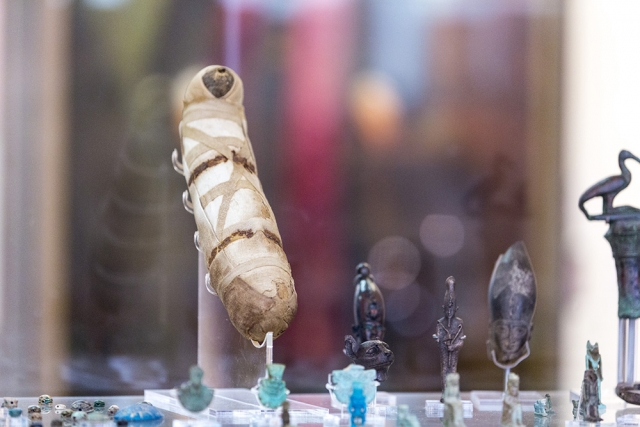Using the back cover image: Mummified cat
Primary History feature

Mummified cat embalmed in linen cloth
For hundreds of years, travellers to Egypt have marvelled at the amazing monuments evident throughout the country. The treasures of Ancient Egypt became more fascinating after the discovery of the Rosetta stone in 1799, which led to the deciphering of the hieroglyphic language. Many Victorian explorers returned to their European homes after archaeological expeditions with interesting objects and exciting finds, lending these artefacts for display in museums. From the British Museum to smaller local museums, Egyptian objects enabled ordinary people to catch a glimpse of, and increase their knowledge and fascination with, the ancient world.
On display at the Beaney House of Art & Knowledge in Canterbury is a mummified cat which provides the visitor with a connection to a unique way of life from thousands of years ago. In Ancient Egypt, cats were highly regarded for controlling ever-present rats, mice and snakes. Wild cats gradually became domesticated and the cat became a symbol of refinement. So revered was the cat, that at the height of its popularity it was illegal to kill a cat, even accidentally...
This resource is FREE for Primary HA Members.
Non HA Members can get instant access for £1.49

